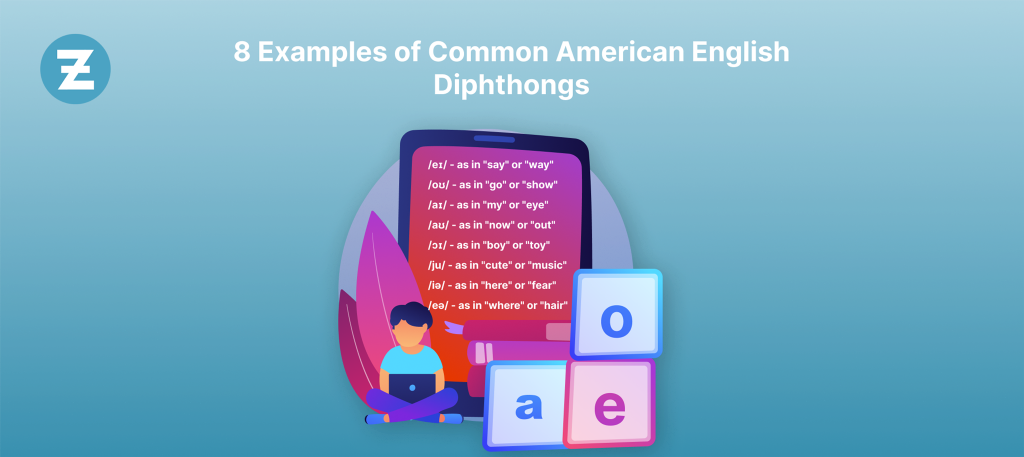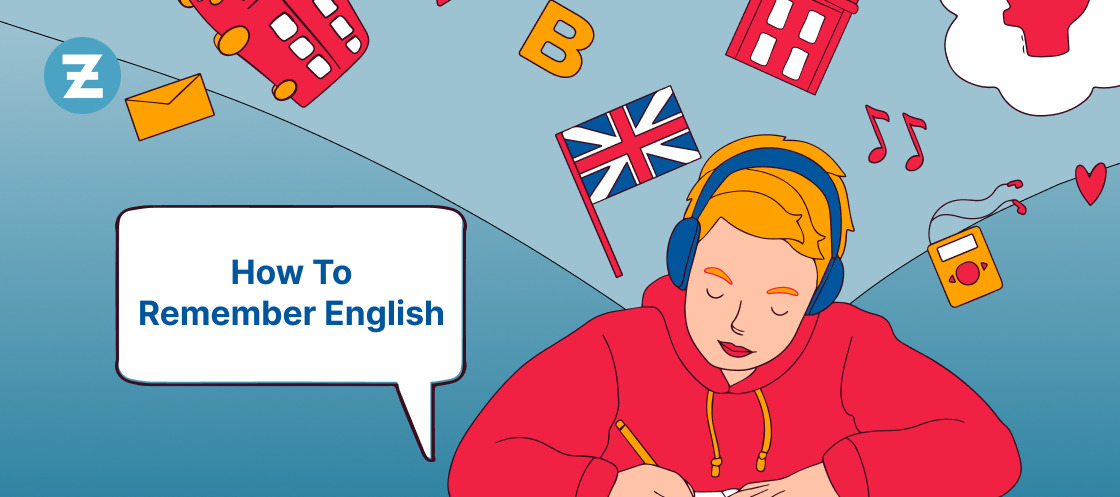Are you struggling with American English diphthongs and finding it hard to pronounce certain words correctly?
In this article, we’ll dive into the 9 main English diphthongs, provide examples with audio, and give you tips for mastering them.
Whether you’re a non-native speaker or a native speaker looking to improve your pronunciation, this guide is perfect for anyone looking to slide smoothly through the complexities of English diphthongs.
Read Also: Common English Words with Multiple Meanings
What Is an English Diphthong?
Understanding the concept of diphthongs requires a basic understanding of vowels.
According to the Cambridge English Dictionary, a vowel is an unobstructed sound produced by the mouth. A diphthong, derived from the Greek word “two sounds,” is a combination of two vowel sounds pronounced closely together, almost as one sound.
Although there are numerous possible diphthongs, American English has only eight major ones. These diphthongs are pronounced in a way that the sound appears to glide between the two vowel sounds. The International Phonetic Alphabet (IPA) is used to depict these sounds accurately.
Let’s explore the eight most common diphthongs in American English.
-
/eɪ/ – as in “say” or “way”
The diphthong /eɪ/ is a combination of two distinct vowel sounds. It begins with an open-mid front unrounded vowel sound /e/ and transitions into a close front unrounded vowel sound /ɪ/.
This diphthong is commonly represented in spelling by the letters “ay”, “ai”, “ei”, and “ey”.
Some examples of words containing the /eɪ/ diphthong include:
- say – /seɪ/
- way – /weɪ/
- may – /meɪ/
- pay – /peɪ/
- day – /deɪ/
- train – /treɪn/
- eight – /eɪt/
- rain – /reɪn/
- steak – /steɪk/
- break – /breɪk/
In these words, the /eɪ/ diphthong is pronounced with a rising and falling intonation, starting with an “eh” sound and transitioning to an “ee” sound.
-
/oʊ/ – as in “go” or “show”
This diphthong is commonly spelled using a combination of letters such as “o”, “oe”, “ou”, and “ow”.
Here are a few examples of the words that feature the /oʊ/ diphthong:
- go – /goʊ/
- show – /ʃoʊ/
- know – /noʊ/
- low – /loʊ/
- boat – /boʊt/
- phone – /foʊn/
- road – /roʊd/
- those – /ðoʊz/
- sold – /soʊld/
- own – /oʊn/
In these words, the /oʊ/ diphthong is pronounced with a rising and falling intonation, starting with an “oh” sound and transitioning to an “oo” sound.
Read Also: Idioms to Make You Sound Like a Native English Speaker
-
/aɪ/ – as in “my” or “eye”
In written language, it is typically represented by the letters “i”, “y”, “ai”, and “ei”.
Examples with the /aɪ/ diphthong include:
- my – /maɪ/
- eye – /aɪ/
- fly – /flaɪ/
- high – /haɪ/
- buy – /baɪ/
- guy – /ɡaɪ/
- why – /waɪ/
- try – /traɪ/
- tie – /taɪ/
- lie – /laɪ/
In these words, the /aɪ/ diphthong is pronounced with a rising and falling intonation, starting with an “ah” sound and transitioning to an “ee” sound.
-
/aʊ/ – as in “now” or “out”
This particular diphthong is commonly represented in spelling by the letters “ou”, “ow”, and “au”.
Here are some examples that feature the /aʊ/ diphthong:
- now – /naʊ/
- out – /aʊt/
- how – /haʊ/
- cow – /kaʊ/
- power – /paʊər/
- down – /daʊn/
- mouth – /maʊθ/
- doubt – /daʊt/
- loud – /laʊd/
- house – /haʊs/
In these words, the /aʊ/ diphthong is pronounced with a rising and falling intonation, starting with an “ah” sound and transitioning to an “oo” sound.
Read Also: Ways to improve your English listening skills
-
/ɔɪ/ – as in “boy” or “toy”
This sound is commonly represented in spelling by the letters “oy” and “oi”.
Here are some examples of words that contain the /ɔɪ/ diphthong:
- boy – /bɔɪ/
- toy – /tɔɪ/
- joy – /dʒɔɪ/
- employ – /ɛmplɔɪ/
- destroy – /dɪˈstrɔɪ/
- annoy – /əˈnɔɪ/
- loyal – /ˈlɔɪəl/
- coin – /kɔɪn/
- noise – /nɔɪz/
- voice – /vɔɪs/
In these words, the /ɔɪ/ diphthong is pronounced with a rising and falling intonation, starting with an “aw” sound and transitioning to an “ee” sound.
-
/ju/ – as in “cute” or “music”
Some examples of words containing the /ju/ diphthong include:
- cute – /kjut/
- music – /ˈmjuzɪk/
- use – /jus/
- beauty – /ˈbjuti/
- huge – /hjudʒ/
- student – /ˈstjudənt/
- tube – /tjub/
- juice – /dʒus/
- suit – /sut/
- few – /fju/
In these words, the /ju/ diphthong is pronounced with a rising and falling intonation, starting with the consonant sound /j/ and transitioning to the vowel sound /u/.
Read Also: Best Tongue Twisters for English Pronunciation Practice
-
/iə/ – as in “here” or “fear”
This sound is commonly represented in spelling by the letters “ear”, “eer”, and “ere”.
Here are some examples of the words that contain the /iə/ diphthong sound:</span
- here – /hɪər/
- fear – /fɪər/
- clear – /klɪər/
- deer – /dɪər/
- near – /nɪər/
- peer – /pɪər/
- year – /jɪər/
- cheer – /tʃɪər/
- beer – /bɪər/
- mere – /mɪər/
In these words, the /iə/ diphthong is pronounced with a rising and falling intonation, starting with the “ee” sound and transitioning to a neutral, unstressed sound.
-
/eə/ – as in “where” or “hair”
This diphthong is commonly represented in written English by the letters “air”, “are”, and “ear”.
Here are a few examples of words featuring the /eə/ diphthong:
- where – /wɛər/
- hair – /hɛər/
- there – /ðɛər/
- share – /ʃɛər/
- care – /kɛər/
- bear – /bɛər/
- rare – /rɛər/
- pear – /pɛər/
- stare – /stɛər/
- swear – /swɛər/
In these words, the /eə/ diphthong is pronounced with a rising and falling intonation, starting with the “eh” sound and transitioning to a neutral, unstressed sound.
Read Also: 16 Ways to Improve Your English Spelling
English Diphthongs Learning Tips
- Listen carefully: Mastering diphthongs in English requires attentive listening and practice. To improve your skills, watch videos or audio recordings of native speakers pronouncing diphthongs in various words and contexts. Focus on the nuances and inflections of each sound, and practice until you feel confident in your ability to reproduce them accurately.
- Practice vowel sounds: Before learning diphthongs, ensure you understand English vowel sounds well. This will help you distinguish between the different sounds and produce them accurately.
- Mimic native speakers: Try to mimic the pronunciation of native English speakers. Pay attention to their lips and tongue movements as they pronounce each diphthong.
- Use tongue twisters: Tongue twisters are a great way to practice diphthongs and improve your overall pronunciation. Look for tongue twisters that include the diphthongs you want to practice and say them out loud slowly at first, then gradually increase your speed.
- Get feedback: Ask a native English speaker or a language teacher to listen to your pronunciation and provide feedback. They can help you identify areas that need improvement and provide tips on improving your diphthong pronunciation.
- Practice regularly: Like any skill, mastering English diphthongs takes time and practice. Practice regularly and incorporate diphthongs into your daily English language practice routine.
Conclusion:
In conclusion, mastering English diphthongs is crucial for effective communication in the language. By familiarizing oneself with the eight common American English diphthongs and practicing their pronunciation, anyone can improve their language skills and become a more confident speaker.
If you are looking for a fun and interactive way to improve your American English diphthongs, look no further than the free language improvement app, Zoundslike. This innovative app uses game-based learning techniques to make language learning more engaging and enjoyable. With Zoundslike, you can practice English diphthongs and other language skills in a fun and interactive way. Download the app now!
FAQs
What are diphthongs in American English?
Diphthongs are vowel sounds that consist of two distinct sounds, typically a vowel and a glide, and are pronounced as a single syllable.
How many diphthongs are there in American English?
There are eight major diphthongs in American English.
What are the eight major diphthongs in American English?
The eight major diphthongs in American English are /eɪ/, /oʊ/, /aɪ/, /aʊ/, /ɔɪ/, /ju/, /iə/, and /eə/.
Why is it important to learn diphthongs in American English?
Learning diphthongs in American English is important for clear and effective communication, particularly in spoken English.








